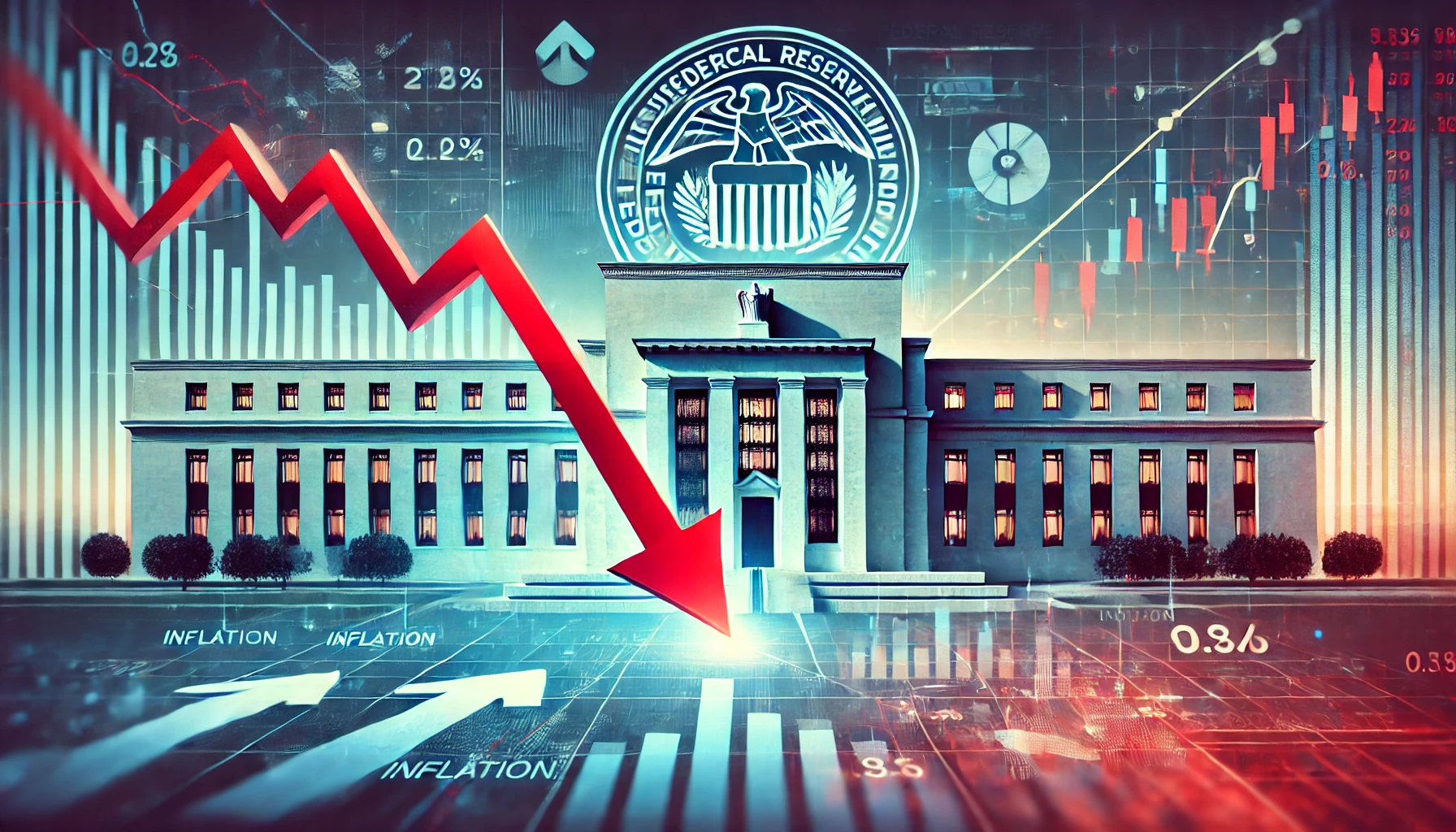Fed Rate Cuts in 2024: Understanding the Impact on Inflation, the Economy, and Financial Markets
The Federal Reserve’s interest rate decisions have long been key indicators of economic policy shifts and market reactions. With the latest news of Fed rate cuts in 2024, economists, businesses, and investors alike are watching closely. As the central bank signals a recalibration of its monetary policy, it’s crucial to understand how these cuts affect the broader economy, inflation, and financial markets. This blog will dive into the impact of Fed rate cuts, how they influence the stock market, and what to expect in the coming months.
Federal Reserve Interest Rate Decisions: What Does It Mean?
When the Federal Reserve announces an interest rate decision, it typically reflects broader economic conditions. A decision to cut rates is usually a response to signals of slowing economic growth or an effort to spur economic activity. In 2024, the Fed is cutting rates for the first time since 2020 after a long period of hikes aimed at combating inflation(Investopedia)(Kiplinger.com).
The Federal Open Market Committee (FOMC), responsible for setting monetary policy, is likely considering various economic factors, including inflation rates, employment figures, and consumer spending, to decide how far and fast to cut rates. With inflation easing and economic growth slowing, these cuts are meant to provide a much-needed stimulus to the economy by making borrowing cheaper and encouraging investment.
Why Is the Fed Cutting Rates Now?
Recent economic reports suggest that the U.S. economy is showing signs of slowing after a period of robust recovery from the pandemic. The Fed interest rate policy has been gradually shifting from its focus on controlling inflation to boosting employment and supporting economic growth. For the past two years, high interest rates helped cool inflation, but with the threat of a recession on the horizon, the Fed has recalibrated its approach(Voice of America).
The Fed interest rate forecast for 2024 projects gradual reductions in the federal funds rate over the next year. This recalibration is aimed at maintaining stability without exacerbating inflation or triggering a sharp economic downturn.
The Impact of Fed Rate Cuts on the Economy
The impact of Fed rate cuts on the economy can be profound, influencing everything from consumer spending to business investments. By lowering rates, the Fed effectively reduces the cost of borrowing, making it easier for businesses and individuals to take out loans, refinance mortgages, and invest in growth. Lower rates generally lead to higher consumer spending and increased business investments, which can boost economic activity.
How Rate Cuts Stimulate Economic Growth
When the Fed cuts rates, businesses benefit from lower borrowing costs, which can encourage them to expand operations, hire more workers, or invest in new technology. Similarly, consumers may take advantage of lower interest rates to buy homes, refinance loans, or make significant purchases. This influx of spending can stimulate the economy, preventing it from slipping into a recession(Morgan Stanley)(Kiplinger.com).
However, the effects of rate cuts on inflation must be closely monitored. While rate cuts can boost economic activity, they can also fuel inflation if demand outpaces supply. The Fed must carefully balance its rate cuts to ensure that inflation does not spike again, which could undermine the long-term stability of the economy.
Fed Rate Cut Stock Market Effect: Investors Respond
One of the most immediate reactions to a Fed rate cut is seen in the stock market. Rate cuts generally provide a boost to stock prices, especially in growth sectors such as technology and consumer goods. When borrowing costs drop, companies can invest more in growth, leading to higher future earnings. This, in turn, can increase investor confidence and drive up stock prices(Investopedia).
Stock Market Performance After Rate Cuts
Historically, the Fed rate cut stock market effect has been positive, with indices like the S&P 500 and the Nasdaq often experiencing gains following announcements of rate reductions. This occurs because investors see rate cuts as a signal that the Fed is willing to take action to support the economy, creating optimism about future growth.
However, rate cuts can also signal that the economy is weakening, which may cause some investors to be cautious. While the Federal Reserve uses rate cuts to stimulate economic activity, markets must weigh the balance between short-term optimism and the long-term risks of a slowing economy.
What the 2024 Fed Rate Cut Means for Inflation
The primary focus of the Fed’s monetary policy over the past two years has been controlling inflation, which surged to a 40-year high in 2022. However, as inflation has cooled to more manageable levels in 2024, the Federal Reserve has pivoted to support economic growth without letting inflation run rampant again.
Monitoring Inflation Amid Rate Cuts
One of the most critical challenges the Fed faces in 2024 is ensuring that rate cuts do not reignite inflationary pressures. While lower interest rates can boost spending and investment, they can also increase demand for goods and services, which, if not matched by supply, can drive up prices(Kiplinger.com).
The Federal Reserve rate reduction in 2024 is part of a broader strategy to maintain inflation at its target rate of around 2%. Although inflation has dropped from its 2022 peak, the Fed remains vigilant to avoid a repeat of rapid price increases. The effects of rate cuts on inflation will be closely monitored, and the Fed may adjust its policy if inflation starts to rise again.
Fed Interest Rate Forecast 2024: What’s Next?
Looking ahead, the Fed interest rate forecast for 2024 suggests that the central bank will continue to lower rates, albeit gradually. Fed policymakers are likely to cut rates by an additional 25-50 basis points over the next few meetings, bringing the federal funds rate closer to a neutral level of around 3%(Morgan Stanley).
A Gradual Path to Recovery
Economists expect that the Fed will take a cautious approach, ensuring that rate cuts do not overstimulate the economy or cause inflation to rise sharply. The goal is to achieve a “soft landing,” where economic growth slows to a sustainable pace without tipping into a recession(Voice of America). This careful recalibration will define the Fed’s approach to monetary policy over the next year.
Navigating the Economic Recalibration in 2024
As the Federal Reserve recalibrates its interest rate policy in 2024, its rate cuts will have wide-reaching implications for the economy, inflation, and the stock market. While rate cuts can provide short-term stimulus and support economic growth, the Fed must carefully balance these benefits with the risks of fueling inflation or causing instability in the financial markets.
For businesses and investors, understanding the impact of Fed rate cuts is crucial for making informed decisions. Whether you’re considering how these cuts will affect borrowing costs or how the Fed rate cut stock market effect will influence your portfolio, staying informed is key to navigating this period of economic adjustment.
For more insights on how Federal Reserve decisions impact economic conditions, check out Regent Studies for in-depth analysis and educational resources.



